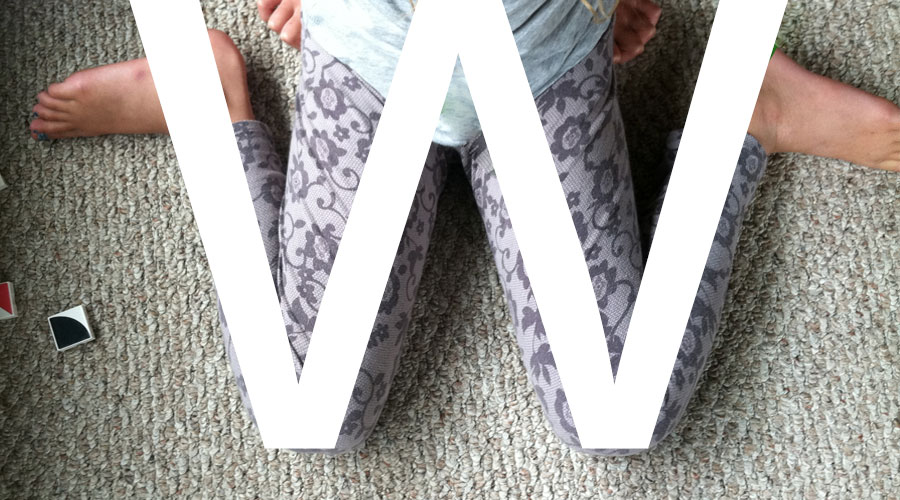

The long term effects of w-sitting
What is all the fuss about? A quick google search of the term reveals a myriad of articles written by physiotherapists, occupational therapists, teachers and parents. Many of these popular articles say that w-sitting should be avoided at all costs! But do we need to demonise it?
“The w-sitting posture is sitting on the floor with both thighs rotated inwards and the feet outwards on both sides of the body (the legs make a W shape, hence the name).”
This posture is usually difficult for adults to achieve because as we grow, we gradually lose mobility in our hips (partly due to the way our muscles and bones grow and partly because in Western cultures we don’t spend a lot of time in postures of extreme hip flexion).
Children, on the other hand, can achieve w-sitting posture more easily. Their hip joints have more mobility and they often spend a lot of time with flexed hips. Many, but not all typically developing children will move through this posture occasionally in their play. Children with low resting muscle tone (“floppy” muscles) and/or joint hypermobility usually find w-sitting very easy to achieve, even to the point of comfort. For children with tight leg muscles, such as those with cerebral palsy, the w-sitting posture may be the only one they are able to sustain.
Given that w-sitting can be part of the normal repertoire of movement during childhood, why do so many recommend it be reduced, if not eliminated? The reason is that children with low resting muscle tone and/or hypermobility tend to choose w-sitting ALL or MOST of the time, when it should only be ONE of a number of different sitting postures used during play. W-sitting has a wide “base of support” making it a very stable shape (imagine how difficult it is to topple a pyramid versus a cylinder). It also requires less trunk muscle control to maintain, meaning that the child is free to play and enjoy what they are doing or watching for a long time, without as much fatigue. This is a great problem-solving strategy – children are natural problem solvers!
What are the consequences of this prolonged and repeated w-sitting?
Surprisingly, scientific research is lacking in this area. Anecdotally, children who predominantly w-sit may have fewer opportunities to develop more advanced postural control strategies, have delayed motor milestones, walk with more internal rotation (legs turned in), and could complain of hip problems later in life. It is unlikely that w-sitting is the main culprit, but part of the story. W-sitting might impact a child’s ability to participate in more advanced types of play (collaborative and imaginative play). Imagine a collaborative building project – children need to get up and down, shift their weight, and reach in all directions. All of these things are more difficult when w-sitting.
If you notice your child is w-sitting a lot of the time, it’s not necessary to constantly bug them about it. You could try moving their toys/tablet to a table so they have to kneel or sit One-leg-stand on a chair to play.
Tummy time is not just for babies – older kids can also benefit from short periods of play whilst on their tummies, supported by their arms and shoulders. Playing some active games involving balancing on one leg, running, kneeling or jumping is also a fun and useful way to break up long periods of sitting still!
In conclusion… W-sitting is not all bad news, but when it is the only posture favoured by your child it could be an indicator of other problems. If your child’s w-sitting is worrying you, or you have concerns about your child’s movement, posture, or development, do seek help from a health professional such as a physiotherapist with experience in paediatric and developmental practice.
Written by Sarah Reedman
